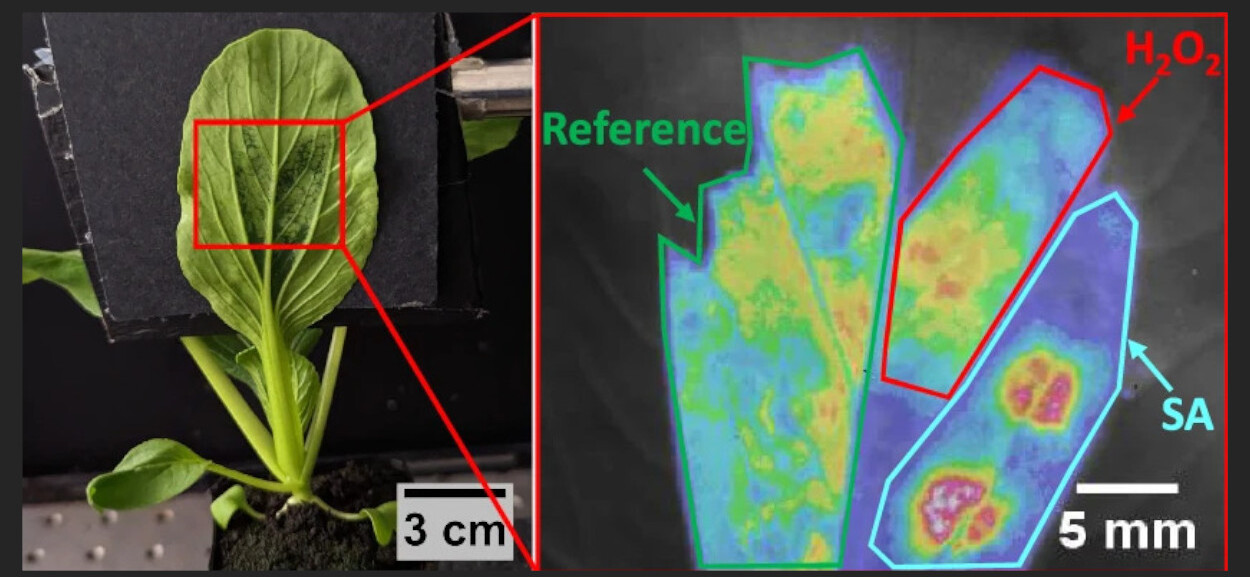Soybean harvest approaches 50% of the cultivated area in RS
There remain considerable areas of soybean crops to be harvested, especially in the southern half of the state, where the oilseed cycle has ended

Researchers at MIT and the Singapore-MIT Alliance for Research and Technology (SMART) have developed a pair of sensors that can detect signs of stress in plants, such as heat, intense light, or attacks by insects and bacteria. Made from carbon nanotubes, these sensors identify signaling molecules – hydrogen peroxide and salicylic acid – that plants use to coordinate their responses to such stresses. The study was published in the journal Nature Communications.
Professor Michael Strano, from MIT, highlights that the sensors are capable of informing, in real time, the type of stress the plant is going through through chemical changes that act as a "fingerprint" of the specific stress. Sarojam Rajani from the Temasek Life Sciences Laboratory in Singapore also led the research.
In 2020, Strano's lab developed a sensor to detect hydrogen peroxide, a distress signal from plant cells. The new research expands this technology to also detect salicylic acid, involved in many aspects of plant growth and stress response.
The sensors are applied in a liquid solution to the underside of the plant leaf, entering through the stomata and lodging in the mesophyll, where most photosynthesis occurs. When activated, the signals are easily detected by infrared cameras.
The researchers tested the sensors on pak choi (brassica rapa subsp. chinensis), exposing plants to different stresses: heat, intense light, insect bites and bacterial infections. Each type of stress provoked different responses in the production of hydrogen peroxide and salicylic acid.
The ability to gain real-time information about the health of plants and detect signs of stress before visible damage occurs could transform agriculture. The technology could be used to create "sentinel plants", offering farmers earlier warnings and enabling more effective and timely interventions.
In addition to monitoring, the sensors could in the future trigger automatic responses, such as adjusting the temperature or lighting in greenhouses, increasing efficiency in agricultural management.
The results could represent a new chemical "language" by which plants coordinate their responses to the environment, marking a significant advance in our understanding and ability to communicate with the plant world.
"Increased exposure to environmental stresses due to climate change has negatively affected plant growth and productivity. Following stress, plants activate a signaling cascade, involving multiple molecules such as H2O2 and plant hormones such as salicylic acid (SA), leading to stress resistance or adaptation. However, the temporal order and composition of the resulting cascade remain largely unknown. In this study, we developed a nanosensor for SA and multiplexed it with H2O2 nanosensor for simultaneous monitoring of H2O2 and SA signals induced by Stress. stress when plants brassica rapa subsp. chinensis (Pak choi) were subjected to different stress treatments, namely light, heat, pathogen stress and mechanical injuries. Nanosensors reported distinct dynamics and temporal wave characteristics of H2O2 and SA generation for each stress. Based on these temporal insights, we formulated a biochemical kinetic model that suggests that the initial H2O2 waveform encodes information specific to each type of stress. These results demonstrate that sensor multiplexing can reveal stress signaling mechanisms in plants, aiding in the development of climate-resilient crops and pre-symptomatic stress diagnoses."
More information can be found at doi.org/10.1038/s41467-024-47082-1

Receive the latest agriculture news by email